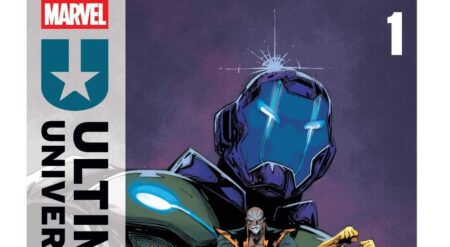
On July 4, 2018, Marvel Comics dropped Ta-Nehisi Coates’ Captain America #1, which was perfect timing for Steve Rogers 100th birthday and Independence Day.
The highly anticipated run starts with Captain America fighting twisted cyborg versions of Nuke. Nuke was a super-villain who was left seriously unstable after being a test subject in the Weapon Plus program, the same super-soldier program that gave Captain America his powers. With the help of Bucky, Sharon and Agent 13, aid he is able to defeat them.
Nuke’s soldiers lament while fighting Steve, stating that he has “Betrayed our boys to Hydra.” This is important, as the first part of this issue deals with the repercussions of Secret Empire, the event that revealed Captain America was a Hydra operative, and how the government and by that, the United States sees Steve despite many knowing the HydraCap was not who is.
Coates’ writing captures the struggle Steve has with being Captain America. He focuses on how Steve is consistently representing a nation that he cannot always agree with. In the opening pages, Steve monologue says he is “A man loyal to nothing except the dream.”
This internal struggle continues as he meets Sharon for dinner. Due to previous events, Sharon is now in her 60s. That being said, the dialogue and subsequent art from Leinil Francis Yu speaks to the deep love and respect they have for each other despite not being able to be together.
Yu’s art is realistic and fitting for a Captain America story. The way he is able to capture Steve and Sharon’s emotions through their eyes is beautifully impressive. In addition, Sunny Gho’s color palette fits the tone of the story and what a Captain America book should look like.
This internal struggle continues as he meets Sharon for dinner. Due to previous events, Sharon is now in her 60s. That being said, the dialogue and subsequent art from Leinil Francis Yu speaks to the deep love and respect they have for each other despite not being able to be together.
Alanguilan’s art is realistic and fitting for a Captain America story. The way he is able to capture Steve and Sharon’s emotions through their eyes is beautifully impressive. In addition, Sunny Gho’s color palette fits the tone of the story and what a Captain America book should look like.
This issue of Captain America tells an emotional human story on the backdrop of government distrust. It is reminiscent of the MCU’s version of Captain America and famous runs like Captain America: Winter Soldier and even Death of Captain America.
In an interview with the New York Times, Coates says, “The opportunity of writing ‘Captain America’ wasn’t to make Steve Rogers talk like the son of somebody who had been in the Black Panther Party. The opportunity was the son of somebody who had been in the Black Panther Party to talk like Steve Rogers. To get into that perspective.” This mindset is present throughout the book.
Overall, the best stories about Captain America are about Steve Roger’s humanity and relationship with the world around him and this issue is no exception. Coates understands Steve Rogers better than any recent writer of the character. This is also the perfect starting point for any non-comic book readers hoping to dive into the character. It does not require much back knowledge and is a similar representation of the character on the screen. I highly recommend Captain America #1 to any comic fan and especially, Captain America fans.
Captain America #1
TL:DR
Overall, the best stories about Captain America are about Steve Roger’s humanity and relationship with the world around him and this issue is no exception. Coates understands Steve Rogers better than any recent writer of the character.






